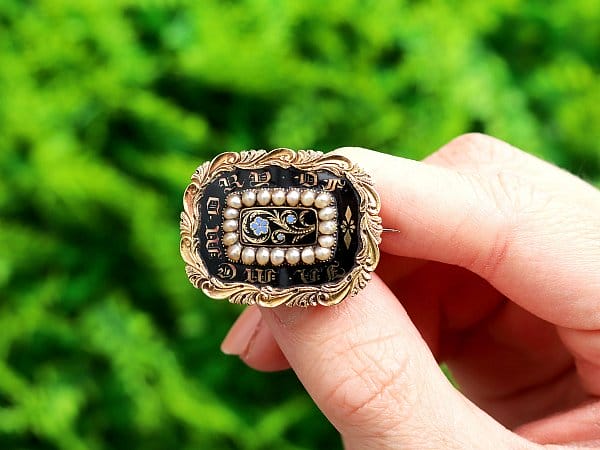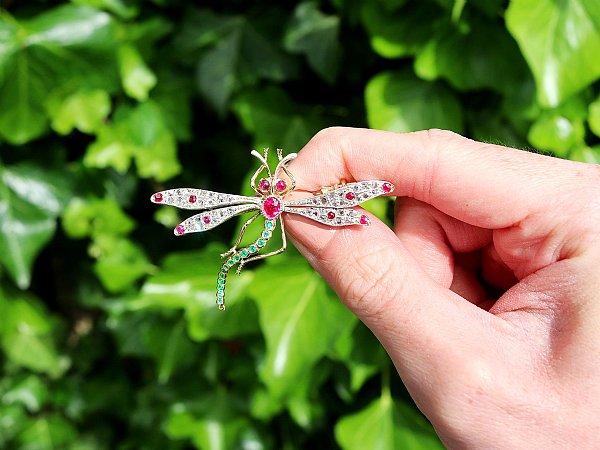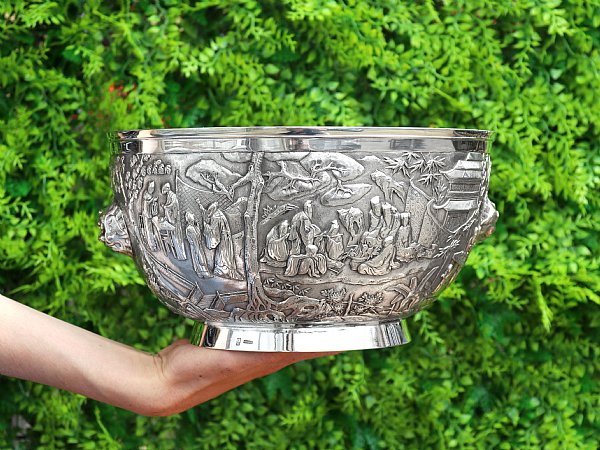Search Results for: '{{searchText}}'
Sorry...
We don't seem to have what you're looking for.
However we do have thousands of magnificent pieces of silver and jewellery available for you to view online. Browse our store using one of these categories.
Please wait for loading data... 
AC Silver is proud to present an extensive selection of vintage & antique mourning jewellery for sale.
Our fine selection features a range of mourning jewellery, including mourning lockes, rings, brooches and bracelets.
All of our antique jewellery featuring gemstones and/or diamonds are accompanied with an independent gemstone and diamond grading report card and/or certificate in addition to free, insured, global shipping.
Andrew Campbell, using his 40 years experience within the antique industry, handpicks all antique mourning jewellery and brooches for sale.

While both of these jewellery types are work in relation to death, they bear some major differences. .
The Latin phrase ‘memento mori’ translates to ‘remember you must die’ or ‘be mindful of death’, and the jewellery style is used as a reminder of mortality – with the symbolism be included in period wedding rings and even handed to mourners at funerals. Memento Mori jewellery typically depicts symbols of death such as skulls, coffins and even worms; which is also reflected in the artwork of the period. This form of ornamentation was worn in the 16th and 17th centuries in the forms of pendants, brooches and rings.
Mourning jewellery was used to commemorate the death of specific loved one, often incorporating initials or memorable dates. This involved much less morbid imagery and was considered to be muted in comparison to memento mori jewellery. In the 1800s it was uncommon to use skulls and such in ornamentation, instead the symbolism would include crosses, flowers and even anchors – which represented steadfast faith. There was also an increase in the use of pearls, symbolising tears.
During the 16th and 17th centuries, mourning jewellery was primarily a ‘memento mori’, a reminder to the wearers of the inevitability of their own deaths. The jewellery was generally in the form of coffins, skulls, and skeletons. It was only later that memento mori jewellery came to be worn in memory of specific individuals.
Georgian Mourning Jewellery
Mourning Jewellery in the early Georgian times was very dark with many dark and grim themes.
Hairwork was also a regular appearance in mourning jewellery from the seventeenth century, this would be incorporated into the background of the piece or help in a compartment to the back of the item. Designing mourning jewellery in this way gave comfort to the wearer that their loved one still remained close to them.Victorian Mourning Jewellery
The mourning jewellery of the Victorian era saw styles and designs soften coffins and skulls were swapped out in favour of sentimental depictions of romantic grief; examples including: enamel weeping willows (these graceful trees symbolized mourning), broken tombs and angels/cherubs on brooches and pendants.
Floral patterns were more or less a permanent fixture of Victorian jewellery throughout time,, in addition to the relevance of willow trees; they are given the name weeping willow for the way that raindrops fall like tears from their drooped branches.
Mourning jewellery came in all sizes, shapes and forms; rings, brooches, pendants, and watches were often decorated with black enamel, jet, agate, or other dark gemstones with only a few exceptions. For instance, white enamel was used to mourn a woman who was unmarried and considered virginal. In the ‘deepest’ time of mourning, only black would have been appropriate for clothing and jewellery, with darker colours such a blue, purple, and red filtering back into the wardrobe toward the end of personal mourning time.
Victorian mourning jewellery became very popular as they honoured their dead with elaborate mourning traditions often deeply entwined with outward appearance, and thus, clothing and jewellery.
Queen Victoria was the figurehead of these mourning customs and traditions, and she was known for spending the rest of her life in a state of mourning after the death of her adored husband Prince Albert.
Mourning jewellery comes in many styles but most notable were brooches, memorium rings and lockets.
Mourning Brooches
Among the most common types of mourning jewellery to survive into the 21st century, mourning brooches were usually large and heavy in their designs. Jewellery made during Queen Victoria’s mourning period was designed around grandeur, with thick yellow gold frame work often featuring etched decoration or scrollwork.
Another very common feature of mourning brooches was hair. Although modern society would suggest that wearing the hair of the dead in a piece of jewellery to memorialise them is bizarre or uncouth, Victorians found it to be very natural. In Victorian society, it was believed that a person’s hair held a part of their essence or soul, and so it was the natural choice for memorialising them.
How the hair was used varied from piece to piece; often it was intricately manipulated to create beautiful decorative patterns. These were usually displayed on a light-coloured backing in order for the hair to stand out, with a clear glass panel protecting it and a thick – often highly ornate – gold border containing it.
Mourning Rings
When hair was used in Victorian mourning rings, it was often plaited into a rope-like material, which in itself was then often used to decorate the shank of the ring. Sometimes, the plaited hair framed the face of the ring, creating square, rectangular, or round shapes which could then be accented by the deceased’s initials. In some pieces of mourning jewellery, the hair was even used to form the initials, either as loose hair piece or as wound rope-like hair strands.
Messages were often incorporated into the mourning ring, such as the deceased’s initials, the date of their death, or simple phrases such as ‘in memory of’ or ‘in loving memory’.
Mourning rings, due to this level of decoration as well as the more general styles of their time, were usually large piece of jewellery, featuring bulky designs that took up most of the finger; with no recorded norm for which finger bore the mourning ring.
Most of Victorian culture was highly regimented and almost strict in the need to adhere to it; and so, it is unique that this socially significant area of jewellery was so flexible. With wedding rings being worn during this time and engagement rings becoming increasingly popular, perhaps it is best to assume that there was no designated mourning ring finger so that the mourner could continue to wear their other jewellery pieces. If a widow wished to mourn in much the same way as Victoria, for example, she would never remarry, and so would perhaps wish to wear her wedding ring until her death.
Mourning Lockets and Pendants
Pendants were a popular style of mourning jewellery as the locket suspends on a chain and rests close to the heart, so you were in fact keeping your loved one as close to your heart as possible
Lockets were a popular pendant style as you cold easily contain the deceased persons hair or a photograph in the locket itself, so this design seemed perfectly suited for the mourning jewellery concept.
Crosses were also a popular design style with mourning pendants, occassionally they would be constructed from human hair, jet or dark enamel.
Antique mourning jewellery used a variety of materials however a significant proportion of mourning jewellery during the Victorian period is made of jet and onyx, likely down to its dark black colour.
In addition you will often see mourning jewellery featuring pearls and diamond. The gemstones were often combined with white or black enamel decoration. White enamel indicated that the person who is being memorialised was either an unmarried woman or a child
Another common material that was utilised in mourning jewellery was hair. The Victorians believed that hair had a very sacred property to it. They believed that it contained part of the essence of the person. Hair is also imperishable, therefore it symbolised immortality. By the mid-1800s, the United Kingdom was importing approximately 50 tonnes of hair a year in order to supplement that of the deceased.
Cloth and fabric can also be found in some pieces, it is belived the cloth would be scraps from the deceased persons clothing.




